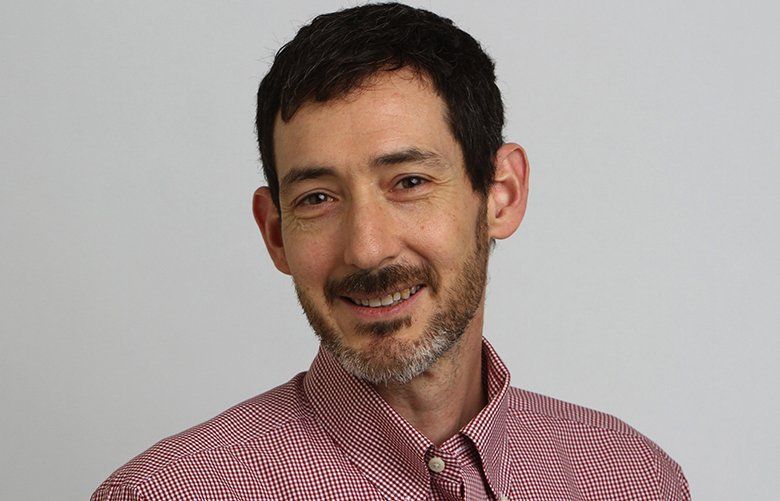Was your Thanksgiving feast less expensive this year than last?
Leading into the holiday, the Biden administration touted data showing lower prices for some Thanksgiving staples like turkey, as well as the price of gasoline, compared with 2022. But that may be setting a low bar, because last year’s Thanksgiving, which came after months of sky-high inflation, was the most expensive on record.
The cost of living and inflation are likely to be among the key issues for voters in the upcoming 2024 presidential election. So I thought this would be a good time to look at the prices of goods and services in Seattle compared with one year earlier.
I turned to the just-released Cost of Living Index for the city of Seattle, which covers the third quarter of 2023. Typically, the Cost of Living Index, or COLI, is used to compare U.S. cities with one another. But I used it to compare Seattle with itself to see how much prices have changed in one year.
Of the 59 items surveyed by COLI researchers in Seattle, 37 were more expensive than they were one year before, 19 were less expensive, and three were unchanged.
Among the 37 items that rose, 19 went up by more than 10%.
The rate of inflation nationally was 3.7% in September, way down from its high of 9.1% in June 2022. But it remains higher than the Federal Reserve’s target rate for inflation, which is 2%.
One major item that’s come down in price in the past year, both in Seattle and nationally, is gasoline. In Seattle, the price per gallon dropped by about 48 cents. But that’s not exactly cause for celebration, as the average was still very high, at $5.14 a gallon in the third quarter of 2023. In fact, Seattle had the most expensive gas of the 269 cities surveyed in the new COLI — even more expensive than the cities in California.
Another thing that was more expensive in Seattle than any of the other cities surveyed is a men’s barbershop haircut, with an average price of $52.50. Unlike gas, the price didn’t fall. It went up, and by a lot — nearly $15 from one year earlier.
Seattle has ranked near the top for the cost of haircuts for years, and before the pandemic the average price was more than $40, according to earlier releases of the COLI. But as the pandemic took hold, many folks were presumably less concerned about personal grooming, and barbershop prices dropped significantly. But they’ve been climbing back up, and now Seattle haircuts are more expensive than ever.
The cost of a number of grocery items saw double-digit increases over the past year. I wasn’t too surprised to see potatoes at the top of the list, because I’ve noticed from earlier releases of the COLI that the price of this starchy vegetable is quite volatile. A 5-pound bag averaged $5.93 in Seattle, up 76%, or $2.56, from one year earlier.
Eggs were also way up in price at $4.58 for a dozen, a 66.5% increase. Sugar (up 35%), bananas (28%) and milk (25%) also had big price jumps.
Price increases were felt across the board, covering a wide range of goods and services. A medium cheese pizza from one of the major pizza chains cost about $14 in Seattle, up 16%. A men’s cotton/polyester blend dress shirt from one of the major department stores cost around $48, up 19%. An annual veterinary checkup for a pet dog cost $94.50, a 16% increase. These are just a few of the 19 items that went up by more than 10%.
The biggest expense for most people is housing, and those costs were also higher. Rent for a two-bedroom apartment, at roughly 950 square feet, in a newer building was about $3,360, up $112 from one year earlier. The price for a newer-construction home (approximately 2,400 square feet) averaged around $1,014,000, up nearly $8,000. The average local mortgage rate for a fixed 30-year loan was 7.47%, up more than 2 percentage points.
There were nine items that decreased in price by at least 10%, including extra virgin olive oil (down 10%), rib-eye steak (11%), whole wheat bread (15%), and toothpaste (17%).
The Cost of Living Index is published quarterly by the Arlington, Va.-based Council for Community and Economic Research, a nonprofit research and policy organization. It was first published in 1968.
To produce the index, hundreds of researchers collect data at the local level on prices for various goods and services. All researchers in each location collect data during the same three-day period each quarter. Researchers are also given detailed instructions on how to select each item (such as brand, size and so on) to ensure the items are as comparable as possible between cities. Taxes are not included in the prices.
For a city the size of Seattle, COLI researchers collect as many as 10 sample prices for each item, when possible.
Seattle ranked as having the ninth-highest overall cost of living in the new COLI release. Compared with the average cost of living for all 269 cities surveyed, it cost about 46% more to live in Seattle. The most expensive place in the nation was New York City’s Manhattan borough, at 128% above average, followed by Honolulu and San Jose, Calif.

The opinions expressed in reader comments are those of the author only and do not reflect the opinions of The Seattle Times.